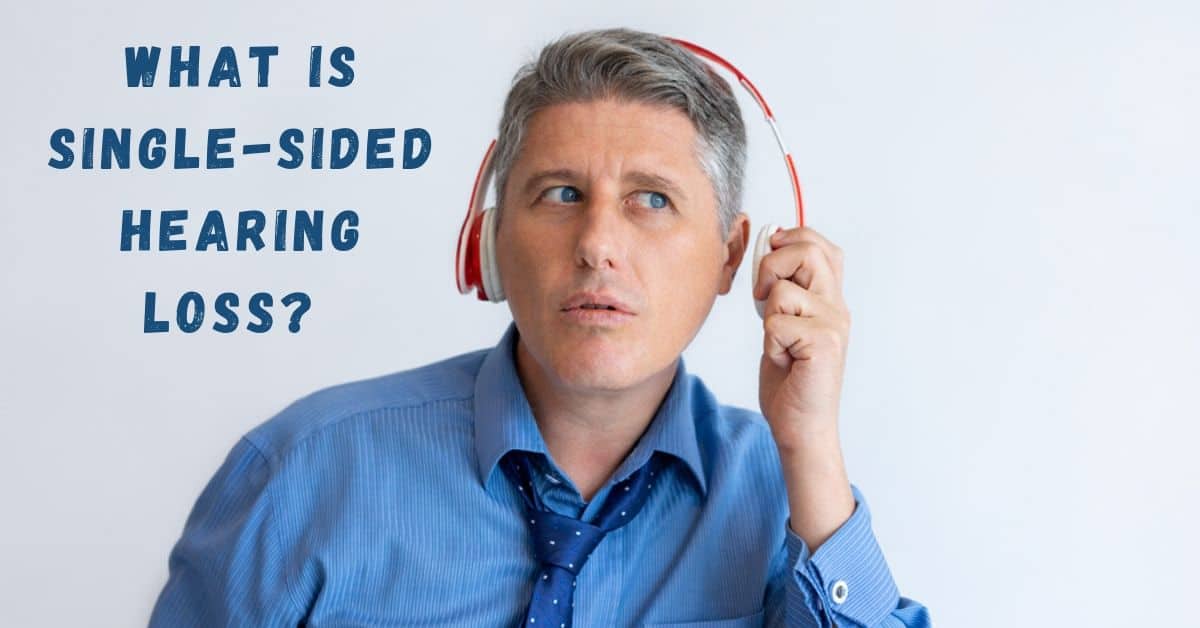
Hearing loss is usually experienced in both ears, but there are some cases where hearing loss only affects one ear. This single-sided hearing loss, also called unilateral hearing loss, can be present from birth, or can develop later in life. When hearing loss in the affected ear is profound, it is often called single-sided deafness. Some people will have completely normal hearing in their “good” ear, but it’s more common to have some hearing loss even in that ear.
Single-Sided Hearing Loss
If you have single-sided hearing loss, you face a unique set of hearing challenges. With one good ear, you might think you’ll be able to hear just fine, but without both ears hearing clearly, you’ll struggle to hear.
- Localizing sounds: One of the main struggles with single-sided hearing loss is difficulty in localizing sounds. The brain uses sounds from both ears to determine where a sound is coming from, but if only one ear is hearing clearly, it’s very difficult to locate where a sound originates.
- Hearing in noise: Another symptom of single-sided hearing loss is difficulty hearing in places with excessive background noise. The brain uses both ears to filter out noise that’s not important, and focus on speech sounds that are right in front of you. With only one ear hearing clearly, it becomes very challenging to focus on what you want to hear.
- Recognizing volume: With only one good ear, the brain has a hard time determining how loud a sound is. Most sounds will seem very soft when only heard by one ear, and sounds will often seem very faint.
- Head shadow: With single-sided hearing loss, you’ll also experience the head shadow effect, where some sounds that are on the side of your bad ear won’t wrap around the head to the good ear, and you’ll have a “blind spot” in your hearing.
Treating Single-Sided Hearing Loss
There are a few treatment options for single-sided hearing loss, depending on the degree of hearing loss in your “bad” ear, and how well you’re able to hear from your “good” ear. You may want to explore hearing aid options of either one or two hearing aids.
- CROS solutions: If your hearing in your “good” ear is normal or mild, a CROS solution will provide great hearing. This stands for Contralateral Routing of Signal, and it will allow your good ear to hear for both your ears. This solution requires you to wear a microphone piece in your “bad” ear, and a hearing aid in your “good” ear. The microphone captures all the sounds coming into the ear, and wirelessly transmits these sounds to the hearing aid, where the “good” ear can process these sounds. CROS solutions will help you localize sounds, hear in background noise, and avoid the head shadow effect.
Do you have some hearing loss in your “good” ear as well? A CROS system provides a great solution for this, because the hearing aid can amplify sounds, reduce background noise distractions, and help you hear clearly.
- Bone-anchored hearing aid solutions: Another solution for single-sided hearing loss is a bone-anchored hearing aid. A small implant will be placed behind the ear, and will transmit sounds directly through the bone to the inner ear rather than through the ear canal. The bone conduction can be very effective, and it’s through the bone that we hear the sound of our own voices. After a short surgery to place the implant, you’ll be able to wear an external hearing aid that will send sounds to this implant, and then through the bone to the ear.
- Cochlear implant solutions: Single-sided hearing loss can also be treated with a cochlear implant. A minor surgery will place a small implant under the skin behind the ear, as well as an electrode array in the inner ear. You’ll wear a behind-the-ear device above the implant. This device has a microphone and transmits sounds to the implant, which converts them to electrical impulses, and sends them on to the electrodes in the inner ear. This simulates the auditory nerve, and sends these electoral impulses to the brain.
The treatment option selected depends on the cause of your single-sided hearing loss, so visit your hearing health specialist to find out why you’re struggling to hear, and discover your best treatment solutions.
